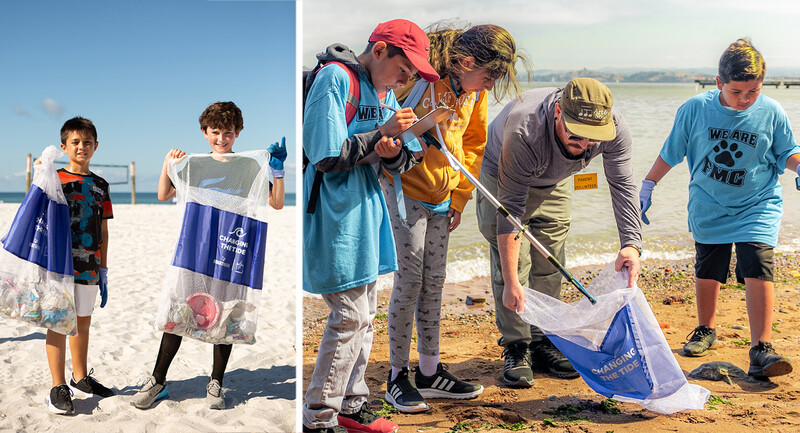In my experience, a fine discussion is like carbonation for the mind, and sometimes for the soul. Also, in my experience, a fine discussion is rare. That's true in part because we feel so busy that it seems an extravagance to devote time to exchanging ideas. In addition, we live in world of media sound bites; many of us have come to accept the length of a tweet as adequate for conveying ideas. And many of us, myself included, too often take part in conversations driven to inject our own experiences rather than listening to and probing the ideas of others. Then there's the reaction we've developed in our polarized world of feeling it's judicious to avoid evoking others' ideas about complex issues.
Considering these widespread tendencies, it's reasonable to conclude that many young people grow up with scant experiences that might lead to valuing dynamic discussions and developing the skills to participate in them. Schools, then, have an opportunity—perhaps even an ethical obligation—to prepare young people to understand the power of discussion in a civil society rich with diversity of experience, perspectives, and needs. To that end, as educators, we have to hone our own skills as discussants and extend our pedagogical understanding in ways that let us show youth the value of discussion—and let us teach the related skills.
Activating Discussions That Matter
Here are eight actions any teacher might take to advocate for—and foster—discussions that make a difference.
Laying the Foundation of Respect
Discussions that live up to their potential—"meaty" ones that tap into thoughts and feelings—involve an element of risk for any student. Our current knowledge of psychology and educational neuroscience indicates that when a learning environment feels consistently positive to a student, the door to learning is open. An environment that successfully invites a student to risk participation in a discussion that, necessarily, exposes him or her to examination by others must have as a main feature a feeling of respect and mutual trust. Some kids will test, over time, whether the environment feels truly safe before it seems prudent for them to participate. To create such an environment, educators can:
- Model respect, empathy, appreciation of diversity, and unequivocal belief in each student. This establishes for students a baseline of caring, affirmation, security, and high expectations.
- Develop respectful relationships between the teacher and each student, which leads to respectful, trustworthy relationships among students. Seek opportunities to talk with students in order to understand them more fully, draw on their strengths regularly, and address their needs systematically. Let students see you derive pleasure through learning from them. Your message should be, "We are stronger and better when we hear and draw on the talents, experiences, and ideas each one of you brings to this classroom."
Bringing Relevance into Content
Worthy discussions deal with worthy ideas. A "discussion" that recounts the "what" in the curriculum will likely be low in relevance to students, low in engagement, and low in potential to help students make sense of what they're trying to learn. While it's reasonable to ask some "what" questions as context for a discussion, a powerful discussion revolves around "why" and "how" questions—why this historical event happened as it did, why this scientific principle is significant in our lives, how certain music affects our emotions strongly. Teachers who want to help students connect more powerfully to content will:
- Understand the essential questions, ideas, and key concepts/principles around which a discipline is organized. A wise teacher uses her growing knowledge of students to link their experiences and interests to the big ideas of the discipline and topic under consideration, so content feels meaningful to them.
- Plan questions that will catalyze discussion, inviting students to contribute questions as well. Incorporate these mighty questions, concepts, and principles into other elements in an instructional cycle—teacher talk, activities, student writing, and so on—so students are primed for the discussions from the outset of a unit of study. It will also help to encourage student opinions on all aspects of classroom life, including topics, questions, and issues worthy of group consideration.
Mentoring Students in Discussion Skills
Only a few of us can cook an enticing meal in our first kitchen experience or play a boast-worthy round of golf our first time on the course. Most pursuits require instruction, mentoring, and modeling leading up to notable outcomes. The skills and attitudes that undergird discussions also require modeling, teaching, guiding—and leaving room for failure—along the way. Teachers who mentor neophyte discussants:
- Consistently model skills and attitudes that contribute to good discussions. This means the teacher respects everyone, believes each person who comes their way can teach them something valuable, listens carefully, uses wait time, and looks for meaning in a speaker's words. In discussion, he summarizes and builds new questions on previous questions and responses.
- Systematically prepare students to participate in meaningful discussions. This includes, but is not limited to, working with students to establish norms for respectful conversations and group discussions; teaching students how to support their ideas as they speak; providing opportunity for substantive dialogues in pairs, small-group, and whole-class opportunities before expecting students to know how to proceed in a big class discussion; showing students how to challenge ideas respectfully; observing students as they engage in early, "sheltered" discussions; and providing feedback that reflects both their growing skills and steps they might take to improve.
- Reflect on the quality of discussions based, at least in part, on indicators of effective discussions established with students. Have students reflect on the quality of a discussion, including their contributions to that discussion and the contributions of peers, and provide feedback to peers or the teacher as the situation warrants.
- Seek ways to put students in the "driver's seat." It's one of the great moments in teaching when a small-group discussion proceeds smoothly, so the teacher is temporarily "useless" to the group. Even better are the times when a student, generally with notice and planning, can successfully lead a discussion. Perhaps best of all are the times when the teacher simply sits among the students, contributing to the discussion only as one of the group, while other group members maintain the flow of ideas, pose and extend relevant questions, provide and attend to alternate viewpoints, seek clarification, and—at least for a time—become models of the stellar discussion leaders we hope they will be beyond the schoolhouse doors.









